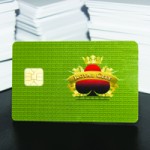Contact vs. Contactless Smart Cards: Which Is Better?
 Although smart cards are technological wonders that represent the next generation of magnetic stripe plastic cards, they may or may not be right for your business. Before you make the leap from traditional mag stripe cards to smart cards, you should ask yourself some questions. Then, if you’re ready to move forward with this investment (which includes the purchase and programming of a sophisticated scanning system and plastic card printing), you’ll have another decision to make – contact smart cards or contactless smart cards?
Although smart cards are technological wonders that represent the next generation of magnetic stripe plastic cards, they may or may not be right for your business. Before you make the leap from traditional mag stripe cards to smart cards, you should ask yourself some questions. Then, if you’re ready to move forward with this investment (which includes the purchase and programming of a sophisticated scanning system and plastic card printing), you’ll have another decision to make – contact smart cards or contactless smart cards?
Your choice, of course, may be a key deciding factor in the type of system you choose. Some scanners have the capability of working with both.
The Difference Between Contact and Contactless Cards
All smart cards contain embedded integrated circuits, which is a microchip inside the card that’s programmed to work with only a specific scanner.
 Contact smart cards require you to actually insert the card for identification purposes. Conversely, contactless smart cards, which are commonly known as RFID (radio frequency ID), only require you to be near the scanner for reading. When you look at a contactless card, you can actually see the antennae around the embedded chip.
Contact smart cards require you to actually insert the card for identification purposes. Conversely, contactless smart cards, which are commonly known as RFID (radio frequency ID), only require you to be near the scanner for reading. When you look at a contactless card, you can actually see the antennae around the embedded chip.
Both types work very well in organizations that demand higher security. The one that’s right for you depends on your needs.
Precautions to Consider with Contactless Smart Cards
As you can probably guess, contactless smart cards make the identification process fast and easy. However, the same technology that enables you to use these plastic cards without touching the scanner also makes it possible for enterprising hackers to steal information. All they need is a portable, hidden scanner. They could be standing right next to you, reading all the information on your smart card, and you would not even know it.
If this is a concern, I recommend getting smart card protector sleeves for your contactless cards. They are the best way to limit the risk of unauthorized access to sensitive and/or personal data.


